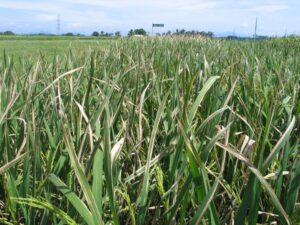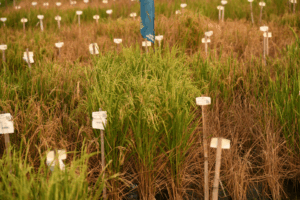Thousands of Nepalese farmers in the southern Terai plains, the country’s rice bowl, face fertilizer shortages and inadequate monsoon rains.
A decline in rice production could further strain Nepal’s economy by forcing the country to import rice.
Rice production in the southern Terai plains contributes about 25% of the country’s gross domestic product and employs a large proportion of the population for at least six months.
Read the story @Mongabay
More on rice production in Nepal
The rice processing industry in Nepal: Constraints and opportunities
A study of the rice milling industry would provide the overall context within which to examine the drivers and barriers to the growth of the rice sector and ultimately to contribute to rice self-sufficiency in Nepal. Therefore this matter is of vital importance in formulating a rice research strategy for Nepal to achieve food and nutritional security and the Sustainable Development Goals.
Nepal follows the path to climate-change-ready rice farming
In 2015, IRRI started the United States Agency for International Development-funded project Accelerating the Adoption of Stress-Tolerant Varieties by Smallholder Farmers in Nepal and Cambodia (ASTV). The ASTV project aims to solve some of the problems plaguing rice productivity, reduce poverty and hunger, and increase the food and income security of resource-poor farm households through high-yielding stress-tolerant rice varieties.
In Nepal: reliable seed networks speed up delivery of climate-smart rice varieties to farmers
A reliable seed network is crucial in bringing climate-smart rice varieties faster to farmers who urgently need them, especially in Nepal. This was an observation made during the 2nd review and planning workshop of Accelerating the Adoption of Stress-Tolerant Rice Varieties by Smallholder Farmers in Nepal and Cambodia (USAID-ASTV) Project. As the delivery of stress-tolerant rice varieties, especially those that are capable of surviving drought and flooding, gains momentum, the varieties are expected to create a significant impact in farmers’ fields.








